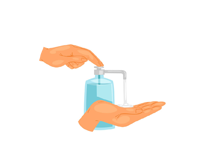Omalizumab
Introduction
Omalizumab is a monoclonal antibody medicine that is mainly prescribed for patients with severe allergic asthma and chronic idiopathic urticaria (hives). It works by blocking the activity of IgE, a substance in the body that triggers allergic reactions. This medicine is given by injection and is usually recommended when other treatments do not provide sufficient relief. Omalizumab helps in reducing symptoms like wheezing, breathlessness, and skin itching, thereby improving the patient’s quality of life.
Medicine Not Available for Omalizumab
Uses of Omalizumab
- Helps manage asthma symptoms in patients who are not controlled with inhaled corticosteroids
- Treats chronic spontaneous urticaria (hives) in patients who do not respond to antihistamines
- Reduces the frequency of asthma attacks and improves lung function
- Decreases allergic reactions related to environmental allergens such as pollen, dust, and pet dander
How Omalizumab Works
Omalizumab is a monoclonal antibody that targets and binds to IgE, an antibody that plays a key role in allergic reactions. By preventing IgE from attaching to immune cells like mast cells and basophils, Omalizumab reduces the release of chemicals that cause inflammation and allergic symptoms. This results in fewer asthma attacks and less severe allergic reactions, improving quality of life for people with allergic conditions.
Benefits of Omalizumab
- Effective in controlling severe allergic asthma
- Reduces the frequency of asthma exacerbations and hospital visits
- Improves breathing and reduces wheezing in asthma patients
- Helps manage chronic urticaria, reducing itching and hives
- Offers long-term relief from allergic reactions when used regularly
How to Take Omalizumab
Omalizumab is administered via subcutaneous injection, typically once or twice a month, depending on the severity of the condition. It is important that a healthcare provider administers the injection in a medical setting due to the potential for allergic reactions. The exact dosage and frequency of injection will be determined by a doctor based on individual patient needs and weight. Do not attempt to self-administer unless instructed by a healthcare professional.
Type of Dosage Available
- Injection (subcutaneous)
Side Effects of Omalizumab
- Injection site reactions such as pain, swelling, or redness
- Headache
- Fatigue
- Rash or skin reactions
- Fever
- In rare cases, severe allergic reactions such as anaphylaxis
Safety Advice
- Do not use Omalizumab if you have a known allergy to the medication
- Consult your doctor if you have a history of severe allergic reactions, especially anaphylaxis
- Ensure that your doctor is aware of any other medications you are taking, particularly immunosuppressants or other asthma treatments
- Monitor for any side effects after the injection and report them immediately
- It is recommended that the injection be given in a healthcare facility where emergency care can be provided if needed
- Pregnant or breastfeeding women should consult their healthcare provider before using Omalizumab
Frequently Asked Questions (FAQs)
Q. What is Omalizumab used for?
A. Omalizumab is used to treat allergic asthma and chronic urticaria (hives), especially when other treatments are not effective.
Q. How does Omalizumab help with asthma?
A. Omalizumab binds to IgE antibodies and prevents them from triggering allergic reactions that cause asthma symptoms like wheezing and shortness of breath.
Q. Can Omalizumab be used for conditions other than asthma?
A. Yes, Omalizumab is also used to treat chronic spontaneous urticaria (hives) in patients who do not respond to antihistamines.
Q. Are there any serious side effects of Omalizumab?
A. While rare, serious side effects such as anaphylaxis (severe allergic reaction) can occur. It is important to be monitored after receiving the injection for any immediate allergic reactions.
Q. How often is Omalizumab administered?
A. Omalizumab is typically administered once or twice a month, depending on the severity of the condition. It is given as a subcutaneous injection by a healthcare provider.
Disclaimer : Zeelab Pharmacy provides health information for knowledge only. Do not self-medicate. Always consult a qualified doctor before starting, stopping, or changing any medicine or treatment.
Download India's most affordable pharmacy app
- Compare with medicine prices
- Save upto 90% on your medicine bills

Temperature Controlled storage and delivery

Regular Sanitization

Disinfected Packaging













 Added!
Added!